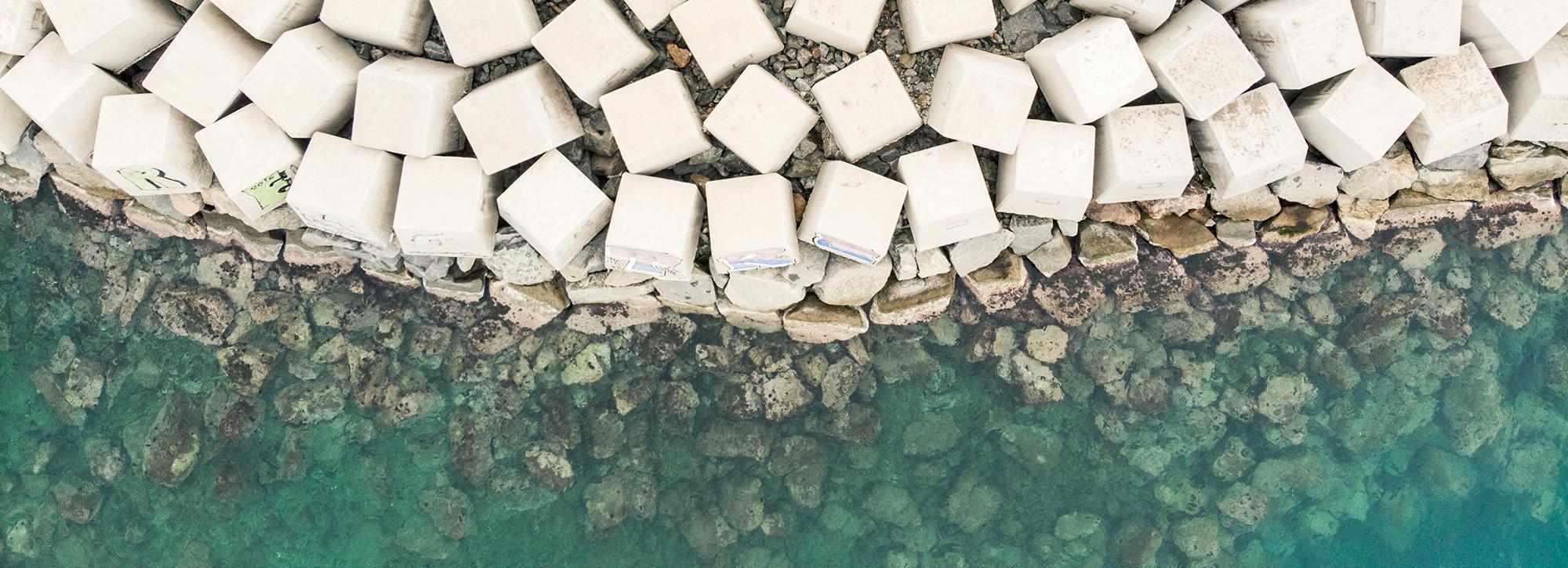
Breaking with convention: do you really need a breakwater?
Breakwaters are expensive. So if we can show that there are other options, then massive cost savings can be made. Clients sometimes come to us with plans involving major capital infrastructure – but when we start asking the fundamental questions, we find there could be alternatives.
Such changes can have massive benefits - reducing capital outlay and increasing the return on investments. Less construction also means a reduced call on natural resources, such as rock, and lower demands for concrete and armouring.
We start major projects by setting out the basis of the design; our aim is to crystallise what our client is trying to achieve and why. In the hands of our specialists, this approach has been successful in delivering significant savings. In fact, we’ve saved one client over $100 million on a single project.
Take the case of Dahej LNG terminal, in north-west India. Our client, Petronet, was challenged with constructing a breakwater in a difficult marine environment. Tidal flows often exceed 3 m/s at the surface and significant wave heights can reach 2 m. A breakwater would cause significant morphological changes to the surrounding area, possibly compromise navigation to the berth (due to the resulting eddies) and would be difficult to construct. Once any breakwater had been built, there would also be the problem of how to prevent future scouring around the structure. So, we posed the question ‘Is a breakwater really required, and if so, why?’ Through a combination of state of the art wave, flow and mooring models we were able to prove that the terminal could operate successfully without a breakwater. The development has now been running effectively for six years.
We asked similar questions when looking at plans for an LNG receiving and regasification terminal at Cochin (Kochi) in Kerala, southern India. Was a breakwater actually required? In this case, despite the location of the terminal on an open coast, we were able to demonstrate that the configuration of the proposed widened access channel and turning area served to sufficiently dissipate wave energy. Computational modelling using TELURAY showed us that (depending on wave direction) the dredged channel acted either to internally refract (Figure A) or reflect (Figure B) wave energy away from the berth. This provided acceptable downtime. A physical model was built to prove that internal reflections from the sub-sea dredged channel were a real phenomenon. Our investigations also included site inspections, assessment of traffic flows, navigation simulation and sediment transport studies.
We evaluated various options for the repositioning of breakwaters, changes in their length or their removal. Our studies indicated that construction of a breakwater would provide no real benefit and that it would be a costly investment for the client to take on. As a result, no breakwaters are proposed for berth protection in the Front End Engineering Design (FEED) package that has been adopted. The operations are more likely to be limited by pilot access to the vessel at sea than the downtime at the berth. Expected operational downtime for vessels at the berth with the final layout is negligible and periods when pilot boarding/navigation in the channel may be constrained is also low (around 3 per cent).
Our aim is to work with our clients to help them solve their problems. Sometimes, as can be seen here, the most appropriate solution is one that is ‘lighter’ in terms of the engineering infrastructure involved.
Want to know more?
